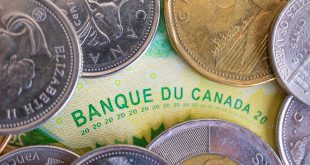The dollar is heading for gains for the fifth week against other major currencies, to record the longest series of gains in 15 months, supported by expectations that US interest rates will remain high for a longer period and by turning to safer assets as a result of concerns about the Chinese economy.
However, the dollar pared those gains slightly on Friday as its rise against the yen kept traders wary of the risks of intervention by the Japanese authorities.
It also seems that the acceleration of the yuan’s depreciation has become a source of concern for the Chinese authorities, as the People’s Bank of China approved a daily reform that is much stronger than expected, which gave the currency some early support after it reached its lowest level in nine months the day before.
The dollar index, which measures the performance of the US currency against six other major currencies, including the yen and the euro, fell by 0.02 percent to 103.38 points in Asian trading, after touching last night the highest level in two months at 103.59 points.
It is heading for a 0.5% rise during the week.
Minutes of the last meeting of the Federal Reserve on Thursday showed that most members of the rate-setting committee still see “significant upside risks to inflation”, indicating their inclination to raise interest rates again.
Strong economic data released this week, particularly retail sales, has already reinforced the situation for further monetary tightening.
All of this pushed the 10-year Treasury yield to its highest level since October at 4.328% on Thursday.
The dollar fell 0.32 percent to 145.365 against the yen on Friday, after reaching a nine-month peak of 146.40 points last night.
The euro rose 0.06 percent to $1.0878, up from a six-week low it hit on Thursday at $1.08565.
And the dollar settled roughly at 7.3045 against the yuan in trading outside China, compensating for a previous loss of 0.24 percent.
The Chinese currency fell to a nine-month low of 7.3490 on Thursday in the offshore markets.
The measures Beijing has taken so far to stimulate the economy are disappointing, although each new data release paints a darker picture of the economic outlook. The yuan is more likely to depreciate.
The Australian dollar fell 0.05% to 0.6399
 Noor Trends News, Technical Analysis, Educational Tools and Recommendations
Noor Trends News, Technical Analysis, Educational Tools and Recommendations





